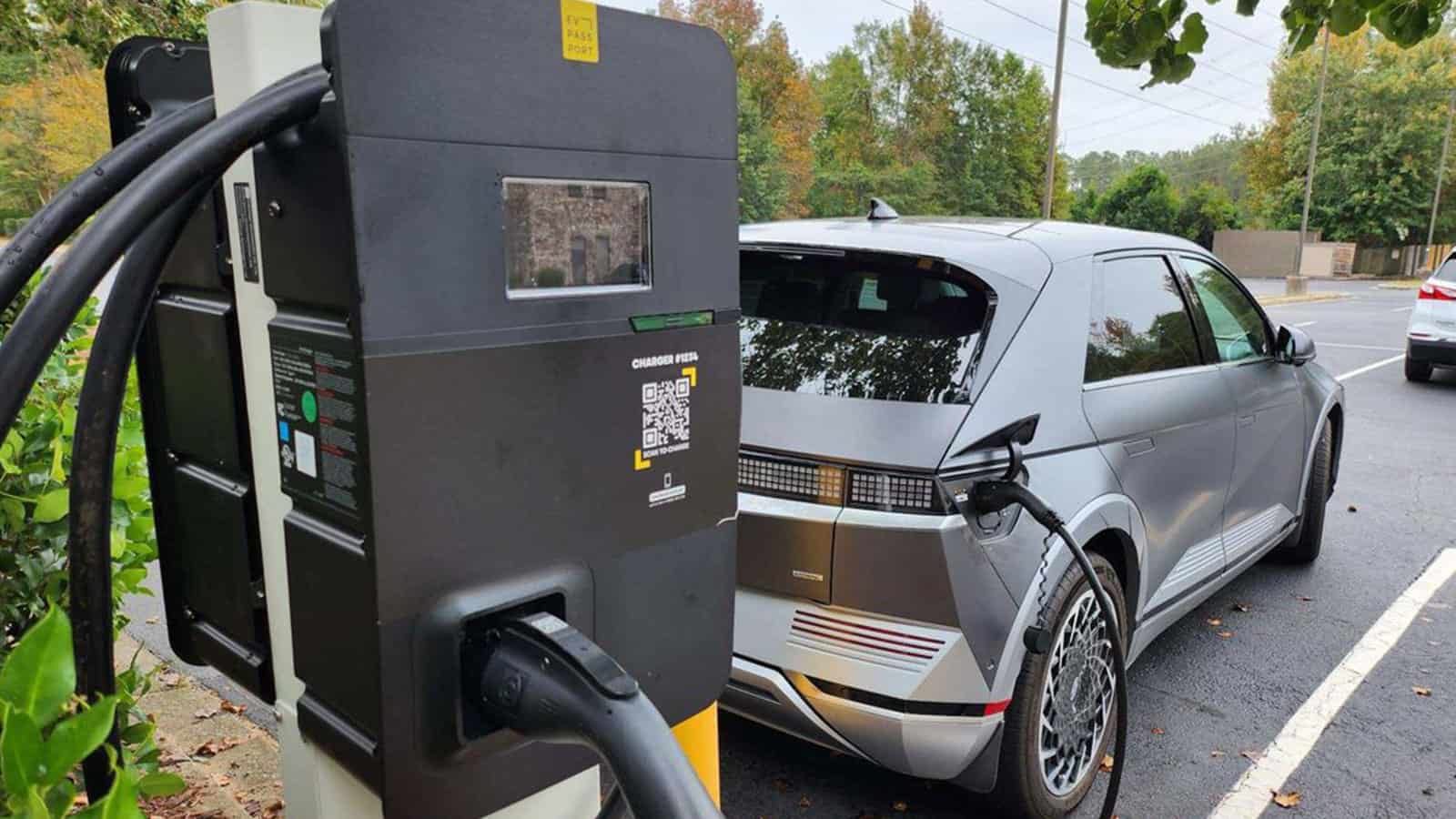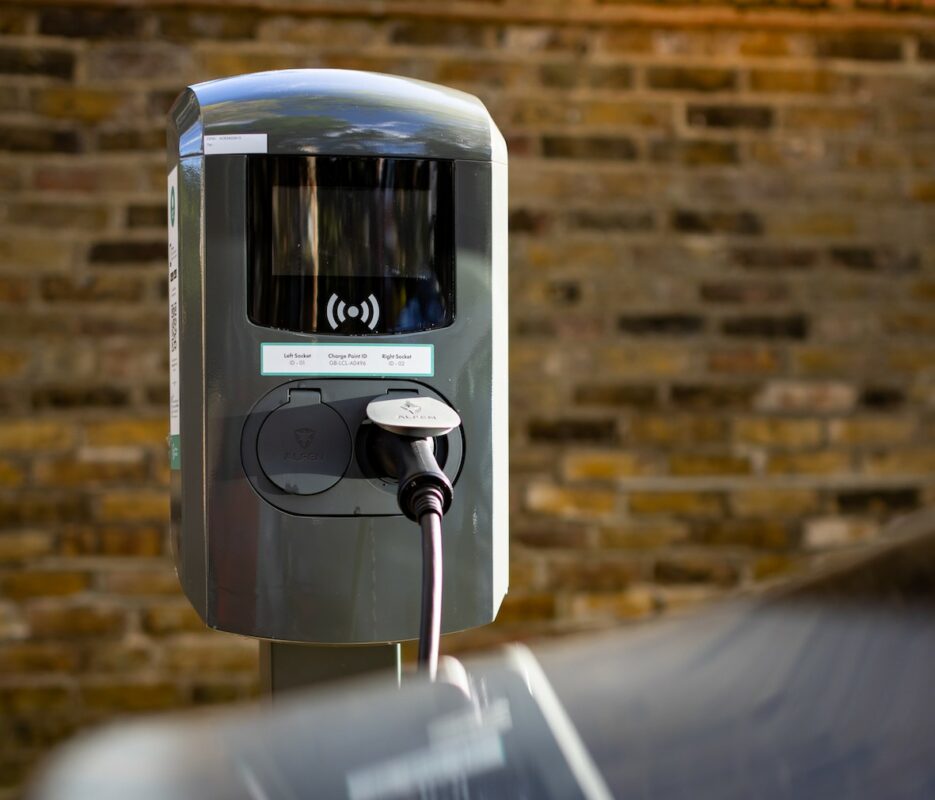Leading EV Charging News: Secret Updates on Facilities and Innovation

Current Advancements in Fast-Charging Modern Technology

Furthermore, advancements in battery technology, including boosted thermal management systems and higher power thickness batteries, enhance fast-charging capacities. These developments alleviate the risk of battery degradation during rapid charging, guaranteeing durability and efficiency for EV owners.
Furthermore, the combination of smart charging services is boosting individual experience, allowing real-time monitoring and vibrant pricing models. EV Charging news. This flexibility allows motorists to enhance billing times and costs based upon grid need
As car manufacturers remain to buy fast-charging networks, the collaboration in between industry stakeholders is important. Collaborations in between billing terminal companies and auto makers are leading the way for considerable protection, inevitably fostering an extra durable EV environment. These improvements are essential in supporting the change to lasting transportation.
Federal Government Campaigns for Charging Expansion
Federal government campaigns play an important duty in the development of electrical lorry (EV) charging framework, helping with the transition to sustainable transportation. Different government and state programs are being executed to enhance billing accessibility, minimize the economic concern on customers, and advertise the adoption of electrical vehicles.
Notably, the united state government has designated considerable funding via the Framework Financial Investment and Jobs Act, which allocates $7.5 billion for EV billing network growth across the nation. This financing is intended at deploying countless new billing stations, especially in underserved areas, thereby dealing with array stress and anxiety amongst possible EV purchasers.
Additionally, various states are enacting regulation to improve the permitting procedure for charging terminal setups, which is important for accelerating implementation. Rewards such as tax obligation credit reports and discounts for both consumers and organizations are likewise being introduced to urge the setup of charging facilities.
In addition, public-private partnerships are significantly coming to be an emphasis, leveraging personal investment to complement federal government funding. These campaigns underscore a collaborative approach important for developing a efficient and thorough EV charging network, inevitably adding to a greener and more sustainable future.
Innovative Battery Solutions Enhancing Performance
Revolutionizing the landscape of electric automobile (EV) innovation, innovative battery services are substantially improving effectiveness and performance. Advancements in battery chemistry, specifically with lithium-sulfur and solid-state batteries, are causing raised power density, which enables longer ranges and faster charging times. These new battery types have the potential to outshine standard lithium-ion batteries by using greater capabilities while decreasing weight, thus improving overall car efficiency.
Moreover, developments in battery monitoring systems (BMS) are optimizing power use and prolonging battery life-span. Smart algorithms check battery health and wellness and efficiency, making it possible for real-time modifications to charging and releasing procedures. This not just improves the effectiveness of the battery however also makes sure a much more trusted and sustainable energy resource for EVs.
Moreover, the combination of reusing innovations is addressing the ecological influence of battery manufacturing and disposal. Technologies in second-life applications article source for EV batteries are facilitating their use in energy storage space systems, contributing to a round economic situation.
As these innovative battery solutions remain to progress, they guarantee to transform the EV market, making electrical cars extra enticing and obtainable to a wider target market while sustaining worldwide sustainability goals.

Cooperation Between Automakers and Billing Networks
Recognizing the essential demand for a robust billing framework, automakers are significantly teaming up with charging network carriers to improve the EV ownership experience (EV Charging news). These collaborations aim to create a seamless charging ecological community that profits consumers and supports the shift to electric vehicles
Significant automobile brands are signing up with pressures with established billing networks to broaden their billing station coverage, ensuring drivers have accessibility to trusted and convenient billing alternatives. For example, partnerships with networks like ChargePoint and Electrify America enable car manufacturers to integrate More Info billing services straight into their automobiles' navigation systems, leading individuals to the closest terminals and giving real-time availability updates.
Furthermore, these cooperations typically cause the development of fast-charging innovations that substantially reduce the time needed to recharge an EV. By pooling resources and proficiency, automakers and charging networks can innovate quicker, creating services that meet the growing need for electrical movement.
In addition, joint efforts may additionally lead to even more standardized billing procedures, which can reduce customer complication and advertise more comprehensive EV adoption. Generally, these strategic partnerships are essential in developing a user-friendly and reliable charging infrastructure that fulfills the needs of an increasing electric lorry market.
Difficulties Facing EV Billing Infrastructure
As the electric vehicle market remains to expand, a number of challenges are surfacing that impede the development of a detailed billing infrastructure. Among the primary obstacles is the not enough number of billing terminals, particularly in underserved and rural metropolitan areas. This void develops array stress and anxiety amongst prospective EV purchasers, discouraging them from making the button.
Additionally, the absence of standardization in billing innovation complicates the infrastructure landscape. Variants in go to this site plug types and billing rates can create confusion for individuals and enhance operational intricacies for billing network drivers. Additionally, the integration of billing stations right into existing electrical grids postures considerable obstacles. Many areas face capacity constraints, needing substantial investments in grid upgrades to fit boosted need.
An additional pressing problem is the high expense associated with the setup and maintenance of billing stations, which can be a barrier for both public entities and personal businesses. Regulatory difficulties and zoning constraints can postpone the deployment of billing framework, hindering progress in broadening vital solutions. Addressing these challenges will be vital for fostering a durable EV ecological community that sustains the shift to sustainable transportation.
Conclusion
To conclude, the continuous developments in EV billing technology, sustained by significant government efforts and ingenious battery services, are essential for the growth and efficiency of electric automobile framework. Cooperations between car manufacturers and billing carriers better improve terminal insurance coverage, dealing with the growing need for available charging alternatives. In spite of obstacles that persist within the EV billing landscape, these developments represent a positive trajectory in the direction of a much more efficient and lasting electric car ecological community.
Innovations in charging infrastructure have actually led to the development of ultra-fast chargers capable of delivering up to 350 kW of power, substantially minimizing charging times. Variants in plug kinds and billing speeds can produce complication for users and increase operational complexities for charging network operators.In conclusion, the ongoing improvements in EV charging innovation, supported by significant government initiatives and innovative battery options, are critical for the expansion and efficiency of electrical lorry framework. Cooperations between automakers and charging service providers even more improve terminal coverage, addressing the growing need for accessible charging alternatives. Regardless of challenges that linger within the EV billing landscape, these advancements symbolize a positive trajectory in the direction of an extra lasting and effective electric vehicle community.